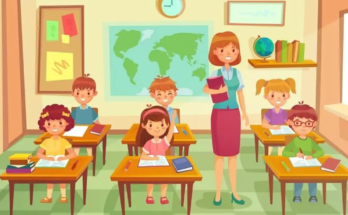Introduction:
Inclusive education ensures that all students, regardless of their abilities or differences, have access to high-quality education and the support they need to succeed. Special education services play a crucial role in meeting the diverse needs of primary students and ensuring that every child has the opportunity to reach their full potential. In this guide, we’ll explore the importance of special education services for primary students and discuss effective strategies for providing inclusive education in primary schools.
Importance of Special Education Services:
Special education services are designed to support students with diverse learning needs, including those with disabilities, developmental delays, learning disorders, and other challenges. These services provide individualized support, accommodations, and interventions to help students access the curriculum, participate in classroom activities, and make progress towards their educational goals. Special education services also promote inclusion, equity, and diversity in schools, fostering a culture of acceptance, respect, and support for all students.

Components of Special Education Services:
Special education services encompass a range of supports and interventions tailored to meet the unique needs of each student. These components may include:
- Individualized Education Programs (IEPs): Individualized Education Programs (IEPs) are written plans that outline the educational goals, objectives, and services for students with disabilities. IEPs are developed collaboratively by a team of educators, parents, and other professionals and provide a roadmap for supporting the student’s academic, social, and emotional development.
- Differentiated Instruction: Differentiated instruction involves modifying the content, process, or product of instruction to meet the diverse needs of students. Educators use a variety of instructional strategies, materials, and assessments to accommodate students’ learning styles, preferences, and readiness levels.
- Accommodations and Modifications: Accommodations and modifications are adjustments made to the learning environment, curriculum, or instructional methods to support students with disabilities or other special needs. Examples of accommodations may include extended time on tests, preferential seating, alternative assignments, and assistive technology tools.
- Related Services: Related services are additional supports and interventions that students may receive to address specific areas of need. These services may include speech therapy, occupational therapy, physical therapy, counseling, and behavioral interventions, among others.
- Collaborative Team Approach: Special education services are delivered through a collaborative team approach involving educators, parents, students, and other professionals. Team members work together to develop, implement, and monitor the student’s individualized plan, ensuring that their needs are addressed comprehensively and effectively.
Effective Strategies for Inclusive Education:
To provide effective special education services for primary students, educators can implement the following strategies:
- Universal Design for Learning (UDL): Apply principles of Universal Design for Learning (UDL) to create inclusive learning environments that are accessible and engaging for all students. Provide multiple means of representation, expression, and engagement to accommodate diverse learners and support their individual learning needs.
- Positive Behavior Support: Implement positive behavior support strategies to promote a positive and inclusive classroom environment. Use proactive strategies, such as teaching social-emotional skills, providing clear expectations, and reinforcing positive behaviors, to prevent challenging behaviors and support students’ social and emotional development.
- Collaboration and Communication: Foster collaboration and communication among educators, parents, students, and other professionals involved in the student’s education. Establish regular communication channels, collaborate on goal-setting and decision-making, and share information and resources to ensure a coordinated and cohesive approach to supporting the student’s needs.
- Professional Development: Provide ongoing professional development opportunities for educators to build their knowledge, skills, and confidence in delivering special education services. Offer training on topics such as differentiated instruction, behavior management, assistive technology, and inclusive practices to support educators in meeting the diverse needs of all students.
- Family Engagement: Engage families as partners in the special education process, recognizing their expertise, insights, and advocacy on behalf of their child. Involve families in the development of the student’s individualized plan, solicit their input on goals and strategies, and collaborate on implementing supports and interventions both at school and at home.
Conclusion:
In conclusion, special education services are essential for meeting the diverse needs of primary students and ensuring that every child has the opportunity to succeed in school and beyond. By providing individualized support, accommodations, and interventions, implementing inclusive practices, and fostering collaboration among educators, families, and other professionals, schools can create inclusive learning environments that support the academic, social, and emotional development of all students. Together, we can build a more equitable, inclusive, and supportive education system that empowers every child to reach their full potential. Thank you for joining us on this exploration of special education services for primary students.



